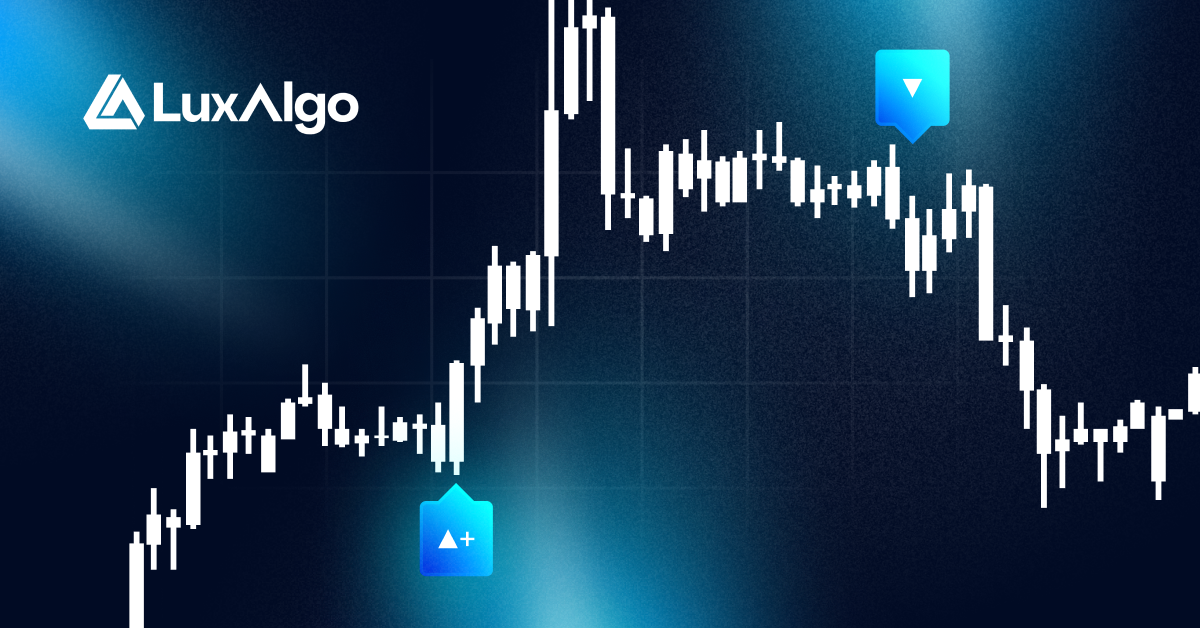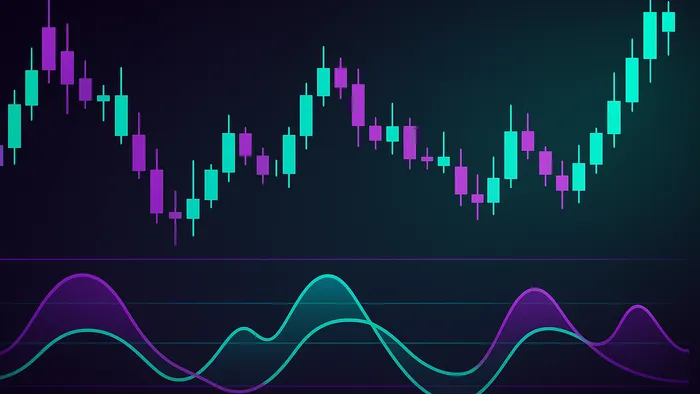Explore the Connors RSI indicator, a powerful tool for short-term trading that combines momentum, streak analysis, and price change magnitude for precise signals.
The Connors RSI (CRSI) is a refined momentum oscillator tailored for short-term trading. Unlike the standard RSI, CRSI combines price momentum, trend duration, and price change magnitude into a single metric, offering faster and more precise signals. It operates on a 0–100 scale, with thresholds of 90+ (overbought) and 10 or below (oversold), making it ideal for identifying quick market reversals or pullbacks.
Key Takeaways:
- What It Does: CRSI provides sharper, quicker signals for traders in volatile markets.
- How It Works: Combines a 3-period RSI, streak length (up/down closes), and rate of change (ROC) percentile.
- Who It's For: Best suited for short-term traders, scalpers, and swing traders across stocks, forex, futures, and crypto.
- Strategies: CRSI works well for pullbacks in trends, range-bounce setups, and breakout confirmations.
For enhanced analysis, LuxAlgo provides TradingView tools that integrate CRSI with features like divergence detection, custom alerts, and backtesting to streamline decision-making.
The rest of the article provides detailed explanations of CRSI's calculation, signal interpretation, and trading strategies.
Connors RSI Indicator: Tutorial
How Connors RSI Works and Calculation
To grasp how Connors RSI operates, it's helpful to break down its three-part formula. Each piece focuses on a specific aspect of price behavior. Together, they create a more comprehensive view of market momentum.
3 Components of Connors RSI
The Connors RSI is built from three key elements:
- Short-Term RSI (3-period): This is a faster version of the traditional RSI, calculated over three periods rather than the usual 14. It responds quickly to recent price changes, making it the cornerstone of the Connors RSI formula and providing the primary momentum reading.
- Up/Down Streak Length: This component measures how many consecutive periods a stock has closed either higher or lower than the previous close. The streak is then converted into a percentile rank based on historical patterns. For example, if a stock has risen for five days in a row, this component evaluates how rare such a streak is over the chosen lookback period.
- Rate of Change (ROC) Percentile Rank: This part evaluates the magnitude of price movement using a 100-period Rate of Change calculation. It then ranks the current price change as a percentile compared to historical data. A higher percentile indicates a more significant price movement relative to past trends.
Step-by-Step Connors RSI Calculation
The Connors RSI combines these three components into a single value, ranging from 0 to 100. Here's how it's calculated:
-
Calculate the 3-Period RSI: Use the standard RSI formula, but limit it to three periods:
RSI(3) = 100 - (100 / (1 + RS)), where RS is the ratio of average gains to average losses over the past three periods. -
Determine Streak Length and ROC Percentiles: Count the number of consecutive up or down closes and convert this streak into a percentile rank using historical data. For up streaks, assign positive values; for down streaks, assign negative values. At the same time, calculate the 1-period Rate of Change:
(Current Close - Previous Close) / Previous Close × 100.
Rank this ROC value as a percentile against the past 100 periods. -
Combine the Three Components: Average the three values:
(RSI(3) + Streak Percentile + ROC Percentile) ÷ 3.
This final average produces the Connors RSI value.
Calculation Example with Numbers
To illustrate, let’s calculate the Connors RSI for a stock with the following closing prices: $52.30 (today), $51.80, $51.20, $50.90, and $51.40. The stock has risen for three consecutive days.
Here’s how each component is calculated:
| Component | Calculation | Result |
|---|---|---|
| 3-Period RSI | Gains over the last three days: Day 1: +$0.50, Day 2: +$0.60, Day 3: +$0.90 | 78.5 |
| Streak Percentile | 3-day up streak ranked historically (e.g., 25% of the time this occurs) | 75.0 |
| ROC Percentile | Today’s ROC: ($52.30 - $51.80) / $51.80 = 0.96%, ranked against 100-period history | 68.2 |
| Final CRSI | (78.5 + 75.0 + 68.2) ÷ 3 | 73.9 |
In this example, a Connors RSI of 73.9 reflects the stock's recent three-day uptrend and above-average price movement, suggesting moderate bullish momentum. This contrasts with a traditional RSI reading of 65.2, offering a more nuanced view of the stock's behavior.
Reading Connors RSI Signals
Connors RSI (CRSI) provides valuable insights for timing trades by interpreting its signal readings. These signals help traders pinpoint short-term opportunities in the market.
Overbought and Oversold Levels
CRSI applies tighter thresholds compared to traditional RSI to spot trading opportunities. The most commonly used levels are:
- Overbought condition: CRSI above 90
- Oversold condition: CRSI below 10
While some traders use alternate levels like 80/20, the 90/10 thresholds tend to provide more dependable signals.
When CRSI hits these extremes, it reflects significant price movement. A reading below 10 suggests selling pressure may have been overdone, signaling potential accumulation. Meanwhile readings above 90 indicate overextended bullish pressure.
Connors RSI in Trending vs. Sideways Markets
The market’s behavior—whether trending or range-bound—can greatly influence how CRSI signals should be interpreted.
- In trending markets, CRSI highlights pullbacks. Oversold CRSI readings during uptrends often signal optimal dip-buying moments.
- In sideways markets, CRSI acts as a direct reversal tool by identifying extremes near support and resistance.
Entry and Exit Signal Examples
CRSI signals are most effective when combined with other technical factors:
- Entry: CRSI dips below 10 then moves back above 20
- Exit: CRSI climbs toward 70–80
Many traders use multi-timeframe alignment to refine entries.
Connors RSI Trading Strategies
CRSI is designed to spot short-term price distortions, offering traders opportunities to capitalize on market movements.
Trend-Pullback Strategy
CRSI excels in identifying trend pullbacks, allowing traders to enter at discounted prices.
Range-Bounce Strategy
CRSI thrives in range-bound markets to time bounces at support and rejections at resistance.
Breakout Confirmation Strategy
CRSI helps validate breakouts by confirming momentum strength and filtering false breakouts.
Using Connors RSI with LuxAlgo Tools

LuxAlgo has taken the functionality of Connors RSI (CRSI) to the next level by integrating it into the Oscillator Matrix (OSC) toolkit and related TradingView indicators.
LuxAlgo Toolkits That Work with CRSI
CRSI integrates seamlessly with:
- Price Action Concepts (PAC)
- Signals & Overlays (S&O)
- Oscillator Matrix (OSC)
With PAC, traders gain pattern detection, order block visualization, and market structure analysis.
With S&O, traders receive visual confirmations including overlays, signals, and trend tools.
Getting Started with Connors RSI and LuxAlgo
Key Points to Remember
CRSI goes beyond traditional RSI by integrating multiple momentum and volatility dimensions.
Your Next Steps
- Explore the LuxAlgo Indicator Library
- Unlock OSC, PAC, & S&O with Premium
- Test CRSI strategies with AI Backtesting
- Build advanced CRSI alerts
FAQs
What makes Connors RSI different from traditional RSI?
CRSI blends momentum, streak length, and percentile ranking for sharper short-term signals.
How can I use Connors RSI with LuxAlgo?
Combine CRSI with LuxAlgo’s Oscillator Matrix, PAC, and S&O to filter noise and refine entries/exits.
Does CRSI work in both trending & range-bound markets?
Yes — CRSI adapts effectively to both when tuned properly.
References
LuxAlgo Resources
- LuxAlgo — AI Technical Trading Platform
- LuxAlgo — Indicator Library
- Adaptive Momentum Oscillator
- Reversal Signals
- RSI Multi-Length
- Breakout Detector
- RSI Guide
- Trending Market Toolkit
- Dynamic S/R
- Reversal Spotting
- Fibonacci Timing
- Candle Body S/R
- Breakouts w/ Tests
- Broz Toolkit
- Oscillator Matrix
- Triangular Momentum Oscillator
- Money Flow Profile
- Price Action Concepts
- Pattern Detector
- Reversal Candlestick Structure
- Market Sentiment
- AI Backtesting
- Backtesting Guide
- Fetching Strategies
- Alerts (S&O)
- OSC Reversal Signals
- Order Blocks
- Market Structures
- Alert Scripting
- Signal Settings








